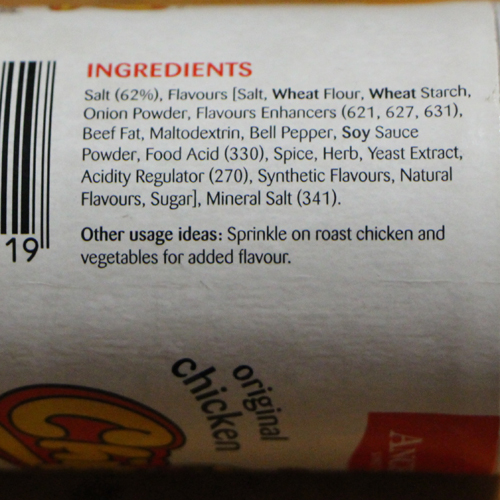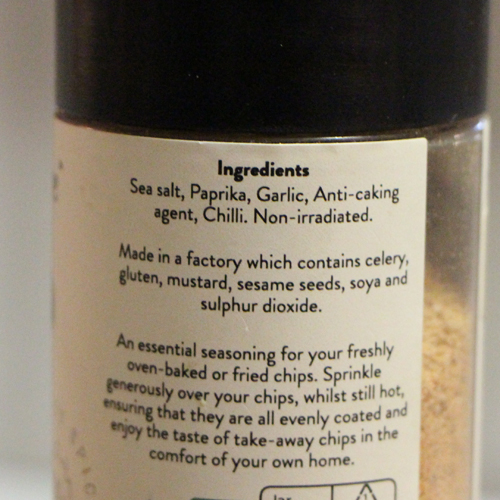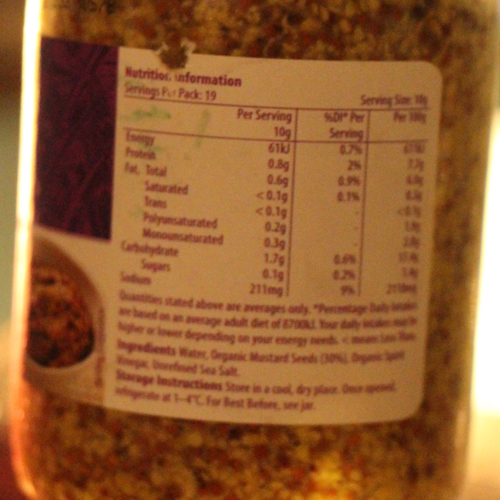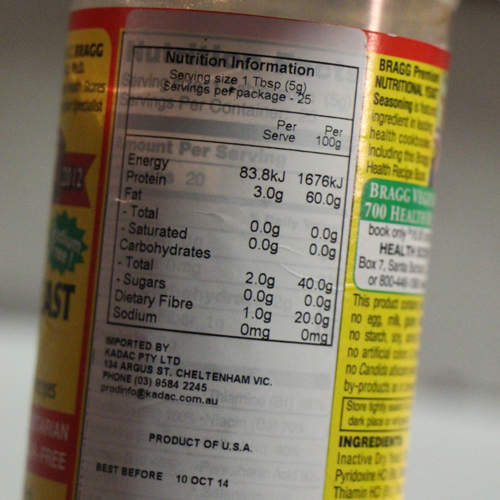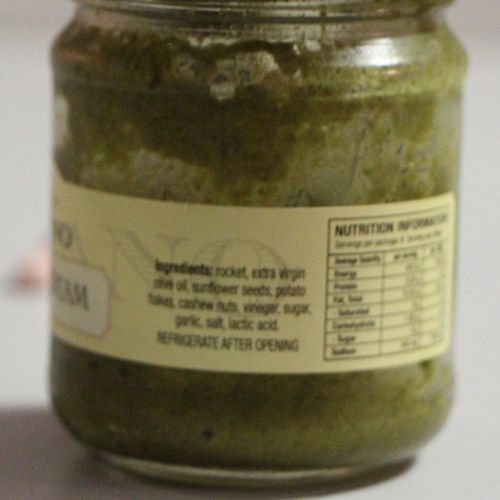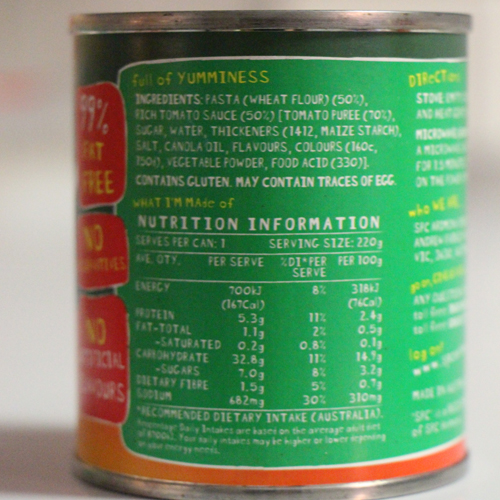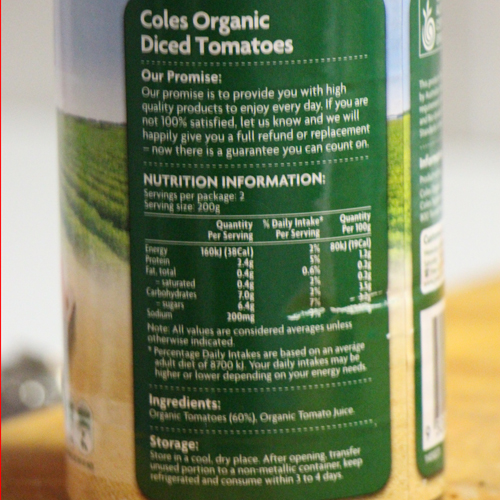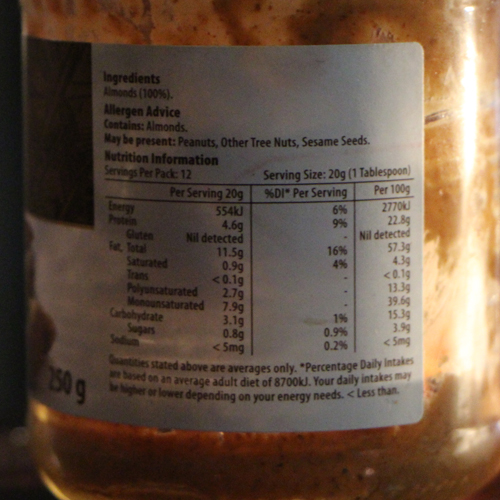Some of my friends are really into the internet grocery shopping. Who knows, maybe I’ll be converted one day, but I actually really like my weekly shop at the grocery store.
I pretty much buy all of our fruit and vegetables from the farmers market, and our bread from Prague Bakery in Kingsley (the bomb!), or also at the farmers market.
So that just leaves things like the cleaning products and the tinned food etc.
One of the reasons I love actually going to the shops, is because I get to browse all the labels and compare them side by side, something I just can’t get my head around doing online.
So, how to you read the label?
Well, if you’re looking at the label to start with, you’re already at step one! Yesssss
Here are my other instructions, in order:
Ignore all of their bulldust on the front.
Some of it is REALLY misleading, and you can pretty much find out what you need to by looking elsewhere.
Read the ingredients
Have a look at these salts for hot chips. I bet you didn’t know that chicken salt actually contains no chicken, but it does contain beef fat. What the?!
So, when you’re reading the label, what do you look out for?
Ingredients
How many are there? Compare this to the list of ingredients in the products by other brands, and try to look for the least ingredients
Are there ingredients you don’t understand? Such as numbers and numbers etc. Numbers almost always = crap. One of the other things I’ve noticed though, is that people become desensitised by some products.
For example, everyone has heard of gelatine, but do you actually know what it is? It is the collagen from animals that comes from their skin, ground up hoofs and bones etc. Mmmm bet ya didn’t know that your kids lollies etc were made from animal bones, hey?
Then there is yeast extract, which is another word for MSG (and in a natural form… which is why you should ignore the bulldust on the front such as ‘all natural flavours’, and look at the ingredients).
What are the main ingredients? Ingredients are listed by the largest quantity to the smallest quantity. So, whatever ingredient is listed first, exists in that food item in the largest quantity.
But, look out for ingredient splitting. For example, in order to hide that sugar is the most common ingredient, some companies will use combinations of things like sugar, so they don’t appear so high up on the ingredient list. Think cane sugar, corn syrup, fructose, glucose…. Basically all different types of sugar.
Look at the nutritional values
First, I always look per 100g to get a sense of the total make up of the food. For example my nutritional yeast has 60g of protein per 100g. Good to know.
But then I look at the per serve value. How much is a serve? Sometimes companies create teeny tiny serves to make their products look a bit better than they are, and sometimes this just helps you put things into context. Like my nutritional yeast. Nutritional yeast is so light, eating 100g would basically be eating the whole pack, so realistically, 1 tablespoon will give 3 grams of protein.
You should especially keep an eye out for salt content and sugar content.
Look at where your produce is made
Have you seen how polluted the water in China is? I don’t eat prawns (obviously), but I cringe when I think of people buying their prawns from Thailand and China. Bottom feeders + polluted water = yuck.
I also don’t think it is a good thing if my asaparagus has travelled all the way from Bolivia. How old must it be before it reaches my plate? And how much petrol has it cost to bring it there? Therefore, I always try to buy things made locally… for a number of reasons.
Look at the expiry date
You don’t want to buy something that is off, or goes off tomorrow now, do you?
Conclusion
I’m no angel. The agave syrup that goes on my mochi on a Sunday morning has 74g of sugar per 100g, I choose to buy processed nuttlex than real butter (because it is vegan), and I have soy cheeses in my fridge. But, I am aware of what I am eating, and this helps me make better choices.
However we choose to eat, and we all choose to eat differently, all I want is for people to educate themselves on their food choices.
I don’t think we’ll ever get a straight answer from food manufacturers, so we have to do it for ourselves!
Here are some of the items from our kitchen:
